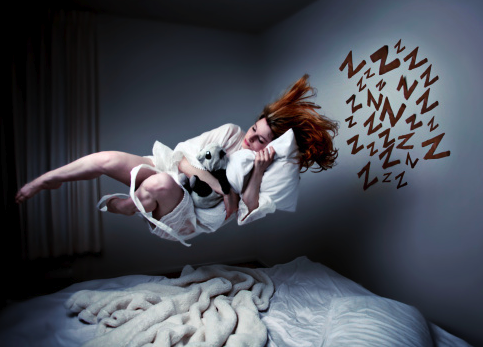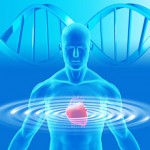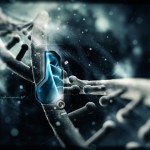Sleep Paralysis: Awake But Still Asleep
Sleep Paralysis: Awake But Still Asleep
Hiro Takahashi
 A person may wake up and find himself unable to move or speak as if he is frozen. He also may hear footsteps, see a ghost-like creature, or feel someone sitting on his chest. Throughout the history, people considered this phenomenon as work done by evil spirits. However, the modern science can explain the terrifying event as a Sleep Paralysis.
A person may wake up and find himself unable to move or speak as if he is frozen. He also may hear footsteps, see a ghost-like creature, or feel someone sitting on his chest. Throughout the history, people considered this phenomenon as work done by evil spirits. However, the modern science can explain the terrifying event as a Sleep Paralysis.
A Sleep Paralysis is possibly a hereditary disorder in which one experiences very frightening seconds or minutes of total body paralysis with little respiration and eye movements (1). A victim in this state feels awake, but he cannot move or speak (2). In addition to the immobility, the common symptoms include feeling choked or suffocated, hearing strange noises like footsteps and voices, seeing beings or dark shadows, and feeling an existance of someone in the room (1). Although these symptoms often direct the victims to believe in ghosts, mistransmission of neural signals in the brain causes Sleep Paralysis. When a person sleeps, his brain sends signals to inhibit any muscle contraction (3). If he comes into consciousness before the brain sends signals to activate muscle contraction, he cannot move his body, and consequently, become “paralyzed”(2).
In order to understand how a body becomes paralyzed while the person is awake, it is necessary to understand sleep cycles. In a mammalian sleep, the brain activity undergoes two different states called non-REM (NREM) sleep and REM sleep, which differ very much from wakefulness (3). NREM and REM sleep alternate cyclically through the night; in human, about 80 minutes of NREM sleep starts a night of sleep, about 10 minutes of REM sleep follows, and this 90 minute cycle is repeated about 3 to 6 times during the night (3). During NREM sleep, a body produces few movement, but the body has capability of tossing about in bed and producing some other motor events, such as sleepwalking and sleeptalking (3). The cardiac-muscle contraction and breathing occur at a uniform rate, and the eyes move slowly (2). During REM sleep, on the other hand, heart rate, respiration rate, and blood pressure vary (3). The eyes move rapidly because most dreaming takes place in this period, and the sleeper probably “look” at the moving objects in a dream (2).
The brain’s control over muscles during REM sleep points out that in this period, a body is normally in the state of total paralysis, called a “nonreciprocal flaccid paralysis” (3). Probably to prevent a person from “acting out” a dream, the brain sends signals to inhibit any muscle contractions (2). Although some peripheral muscles, such as the muscles of the fingers and face, still twitch, the large skeletal muscles become relaxed, or “paralyzed” as a result (3). Some evidence supports that the motor paralysis of REM sleep protect against the acting out of one’s dreams. A patient who suffers from rare syndrome called REM Sleep Behavior Disorder lacks the normal nonreciprocal flaccid paralysis, and he acts out violent dreams during REM sleep, often with injurious consequences (4). For example, a 60-year-old surgeon dreamt that he was attacked “by criminals, terrorists, and monsters who always tried to kill [him]” and fighting against them in the nightmare, he was actually punching and kicking his wife who slept in the same bed (4).
A nonreciprocal flaccid paralysis during REM sleep is accomplished actively by postsynaptic inhibition of motorneurons (3). Although the exact process of motor inhibition is not clear, some neurotransmitters and hormones are known to generate the many components of REM sleep. Aministering physostigmine, an inhibitor of the catabolic enzyme, increases the concentration of acetylcholine within the neurons in the pons, making it possible to artificially generate and start REM sleep in the middle of NREM sleep (3). Carbachol, the cholinergic agonist, produces a period of REM sleep in cat when directly injected into the pontine tegmentum (3). The hormone melatonin, a “master hormone” (5) that mainly controls circadian rhythms, also seems to play an important role in enhancing the REM state; the level of melatonin secretion by the pineal gland reaches its lowest during REM sleep (5). Such neurotransmitters and hormones probably activate or inhibit the activity of second messengers, which then activate or inhibit the third messengers, and so on till the last messenger inhibit the synaptic transmission or cause hyperpolarization of the motorneurons. And if, for some reason, the nervous or endocrine system continues to release the neural inhibitors, a person may experience Sleep Paralysis as he enters awakefully into or awakens directly from REM period (2).
While the modern neuroscience can describe the state of Sleep Paralysis as some errors of the neural transmission in the brain during REM sleep, a person who has seen or heard ghost-like figures/voices may easily believe that eveil spirits fully controlled his entire body. However, the images or noises, which the victim believes that he has seen or heard, are most likely hallucinations; and hallucinations, too, can result from the brain activity. In the 1960’s, the Canadian neurologist W. Penfield introduced that electrical stimulation of the temporal lobe can cause the auditory hallucinations in the wake state (5). The buzzing or ringing sounds in the ears and other auditory hallucinations are closely associated with the activity of the auditory cortex and involves the temporal lobe (5). During the early period of sleep paralysis, the activity of the temporal lobe increases significantly, sometimes inducing hallucinatory sense (5). Similarly, the visual cortex generates internal visual stimuli, causing the victim to “see” terrifying figures during the paralysis (5).
How an episode of Sleep Paralysis induces visual or auditory hallucinations is still not clear, but it seems to have a significant relationship with anxiety (5). For anxiety is a neurocognitive event closely related to both psychological and physical processes, the extreme anxiety or panic may cause the release of several different signal molecules that trigger all kinds of physical events(5). A person experiencing Sleep Paralysis feels mortal fear or extreme panic, and hence, the brain generates and releases internal visual or auditory stimuli, producing hallucinations.
Also, hallucinations during Sleep Paralysis may happen, for one keeps dreaming even after some parts of his brain wakes up directly from REM sleep. Since the nervous and endocrine systems continue to release the neural inhibitors which sustain the paralysis, it may be possible that those systems keep releasing the neural activators that stimulate dreaming. Thus, a person continues to “see” the images and “hear” the noises produced in the dream that he has just had in REM sleep from which he has awaken.
Understanding more neural concepts of Sleep Paralysis, some researchers now hypothesize that a very rare condition called Sudden Unexplained Nocturnal Death Syndrome (SUNDS) may closely relate to Sleep Paralysis (1). Upon the death, a SUNDS victim produces no body movement even though he experiences a myocardial infarction and strong breathing difficulties and should straggle in agony (5). The death may be caused by the extreme muscle atonia during Sleep Paralysis, which is so severe that even the cardiac muscles and the diaghragm paralyze (5).
Until I started researching on this subject, I have believed that the total paralysis of a body is due to an evil taking absolute control over the body. However, the interactions between neurons in the brain can explain this seemingly mysterious phenomenon in a scientific way. Although the explanation is not complete yet, for there are many unclear processes about Sleep Paralysis, the current hypothesis appears to reject the possibility of ghosts on this matter. Of course, it is impossible to completely disprove the existence of “spirits”, “minds”, or “God” affecting one’s behavior. Nevertheless, like Sleep Paralysis and SUNDS, many or the mysterious conditions and behaviors which are only explained in supernatural terms probably result from brain.
WWW Sources
1)The Evil’s of Sleep Paralysis
4)REM Sleep Behavior Disorder: A Neurologic Dissociative Sleep Disorder
5)Recurrent Isolated Sleep Paralysis



